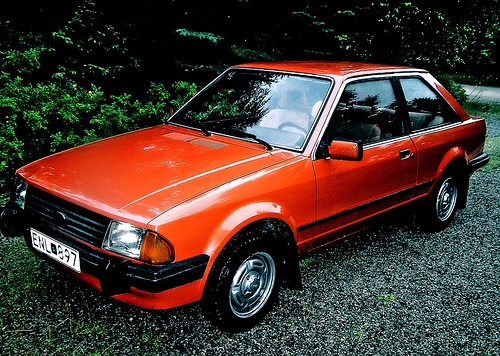
The clutch on your Ford Escort is a large spring-loaded disc that mates to the flywheel. The flywheel is connected to the engine's crankshaft and transmits power generated by the engine through the clutch to the transmission. The clutch is designed to separate from the flywheel whenever the clutch pedal is engaged--that way, the engine can continue to run while the vehicle is stopped. Clutch service requires some automotive skill and specialty tools. If you do not possess these, it may be best to leave the work to a professional.
If the clutch does not release, meaning the clutch pedal travels to the floor but you are unable to easily move the gear shifter in and out of reverse, it could be a sign that the clutch linkage is malfunctioning. Check that the clutch cable is securely mounted to the clutch pedal and that the other end of the cable is connected to the release fork. If the cable is OK the clutch itself could be bent, damaged or excessively worn, and the transmission must be removed to inspect the clutch disc.
You can tell that the clutch is slipping by pressing on the accelerator pedal. If the engine speed increases with little or no increase in the speed of the vehicle, then the clutch is slipping. This condition could be caused by excessive wear on the clutch disc or pressure plate, as well as oil leaking past the rear main seal and contaminating the clutch disc. Either will require removing the transmission to inspect the clutch. If the clutch recently has been replaced, it may not have properly seated yet. It is common for it to take 30 to 40 normal start/stop cycles to properly seat the clutch.
If the vehicle shakes as the clutch pedal is released, begin by inspecting the engine and transmission mounts. The mounts are designed to move slightly when the clutch is released, but too much movement could mean they're worn or loose. Another possible cause could be oil on the clutch disc, with the most likely culprit being a leaking rear main seal. Shuddering could also signify worn splines on the clutch gear or a warped pressure plate and/or flywheel.
If squealing or rumbling occurs when the clutch is released, the release bearing could be caught against the transmission bearing retainer. Remove the bearing and clean off any burs or nicks on the metal. The problem could also be a faulty linkage return spring. Replace the spring if necessary. If you hear squealing or rumbling coming from the clutch while the pedal is pushed toward the floor, it could be a sign of an overly worn or malfunctioning release bearing. Also remove the pressure plate and check the springs and diaphragm fingers. If any are broken, the pressure plate will have to be replaced.
If the clutch pedal stays against the floor when you take your foot off it, it could be caused by binding in the linkage or release bearing. Lift the vehicle and support it with jack stands under the frame. With the engine off, have an assistant operate the clutch pedal while you check the linkage for binding. Clean any nicks or burs that may be hanging up the linkage and lubricate the linkage with white lithium grease. The linkage springs may also be stretched too far. Make sure the clutch pedal stop is properly installed.